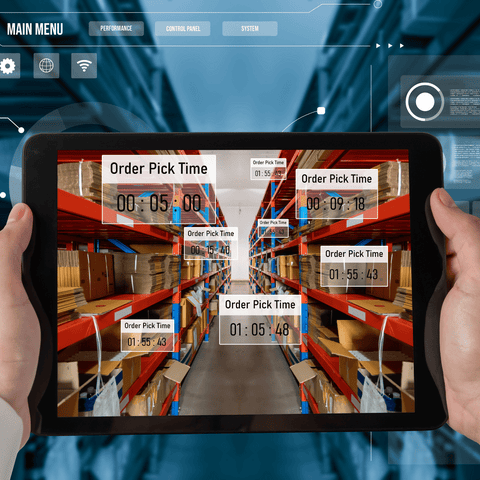2020 marked a sea change in e-commerce. Adobe reports that the total amount spent online in May was $82.5 billion. By April of the same year, the sector had grown by ten years' value in just three short months. Brands were compelled to review their operations due to constrained supply chains and unprecedented demand.
The competition is at an all-time high because practically all shopping is done online. Retailers need to be resilient and nimble if they want to succeed in this climate of extreme speed.
Brands require a larger digital footprint in order to counter the issues presented by an online-only economy. This involves using retail alliances, new sales channels, and marketplaces.
70% of buyers utilise numerous channels to make purchases, according to a recent study.
Additional sales channels also increase complexity. How can you keep up with both the competition and client expectations? A system for managing online orders is a part of the solution.
What is order management for online stores?

ECommerce order management is the back-end procedure for managing and filling online orders. This covers everything, from managing subscriptions and refunds to order routing and producing shipping labels.
Order management used to rely on cumbersome ERPs and manually updated spreadsheets. These antiquated systems and procedures cannot support today's brands and marketplace sellers. Brands want flexible, scalable, and adaptable solutions to be competitive. They require operational technologies that can scale in response to demand and market changes. An order management system can help in this situation.
Every step of the order journey is automated and integrated by order management systems (OMS). This enables businesses to offer standardised customer experiences at scale and across all channels. Operators can handle orders coming in from various sales channels and leaving from various fulfilment points thanks to eCommerce order management systems. It aggregates data inside a single interface and allows automation between service providers.
The foundation of a successful order management strategy is real-time data. Retail data today moves across a number of layers of operational infrastructure, technological platforms like BigCommerce, and sales channels. It's hard to rely on static spreadsheets with this much data.
Order management solutions are becoming more and more important as organisations adopt multichannel shopping.
How Does Order Management in E-Commerce Work?
An order management system's objective is to provide a product to a customer as quickly as feasible. Each item in the customer's order is managed throughout its entire path, from when it is added to the cart to when it is delivered to the customer's door, as well as any subsequent returns.
For example, Qallix Order Management System helps to create accuracy and efficiency in fulfilling orders.
With Qallix, you can view all new, accepted, ready-to-ship, cancelled, and finished orders in one location while keeping track of order progress across all marketplaces.
Never miss an order again, and adhere to all SLAs.
Better purchasing experiences can be delivered by utilising Click-and-Collect, ship-from-store, multi-warehousing, and other methods.
You can also easily download your order reports, including all the order information you require.
The procedure for fulfilling orders:
Every business has a different strategy for fulfilling orders. This may depend on the clients, the fulfilment sites, the returns procedures, and the suppliers. Although procedures can differ, the following phases are typically involved in order fulfilment procedures:
1. A customer places an order with the business.
2. The business enters the order into its database.
3. The client is informed that the business has received the order.
4. The closest warehouse or fulfilment facility receives the order.
5. The order is taken from the shelf by a worker.
6. The business produces shipping labels and prepares the order for shipping.
7. The business sends the order.
8. A notification that the order is being shipped is sent to the customer.
9. The purchase is made.
Systems for managing orders help with order fulfilment:
The purpose of an order management system is to automate, streamline, and reduce the cost of the fulfilment process. These processes are optimised to lower shipping and administrative expenses, improve data quality, and pick and pack most effectively. Many order management systems also offer features that make processing credit cards and returns more efficient. In order to adapt to the way you do the company, the best eCommerce software 2024 will interact with the top eCommerce tools and platforms.
The order management system may update your accounting software, create an invoice, and print a shipping label when a customer makes a purchase. By integrating with your 3PL, FBA, or shipping provider like FedEx or DHL, the eCommerce order management software may even track an order's progress once it has been sent. Once an order has left a warehouse, your customer can follow its progress all the way to their front door. This is frequently made easier by the OMS.
Why are Ecommerce Order Management Systems Important?

Without an order management system in place, the majority of eCommerce businesses cannot expand. Customers demand prompt, economical, and customised order fulfilment. Manual error is not an option. Instead of sorting through backorder SKUs, contacting carriers, or printing documents, staff members could be concentrating on improving the brand experience.
1. More rapid delivery
Companies must create ways to ship things ever-faster in an era where two-day shipping has become standard. Narrowing fulfilment windows The key here is an order management system's automation.
When a customer puts in an order, an OMS can select the warehouse or fulfilment site that is most convenient for the order's final destination. Order specifics and even order past can be used to determine the fulfilment strategy. The warehouse's personnel will then get an automated fulfilment request so they can prepare the order as quickly as feasible and send it out using a reasonable carrier.
2. Greater scalability
A system for managing orders will be able to expand your business. A growth in omnichannel fulfilment requirements won't overwhelm a well-implemented order management system, unlike legacy systems or manual entry. Its carefully created software will be able to scale as your business grows and keep up with you.
3. More opportunities across several channels.
Purchasing from a business's website is no longer the only form of eCommerce. Brands must be direct to all consumers. Nowadays, sales take occur across websites, online shops like Amazon, and social media platforms like Facebook, Instagram, Pinterest, and YouTube. This is known as multichannel and omnichannel marketing. When orders are coming in from so many different locations, and client traffic is moving through scattered platforms, tracking and fulfilling order status can become exceedingly difficult. This may impact customer satisfaction and fulfilment time.
Data, inventory turnover ratio, and order routing across channels can all be centrally stored and tracked via order management systems. This is one of the main benefits of an online order management system in the current e-commerce landscape.
Want more insights like this?
Come have a chat with our eCommerce experts in Qallix.

